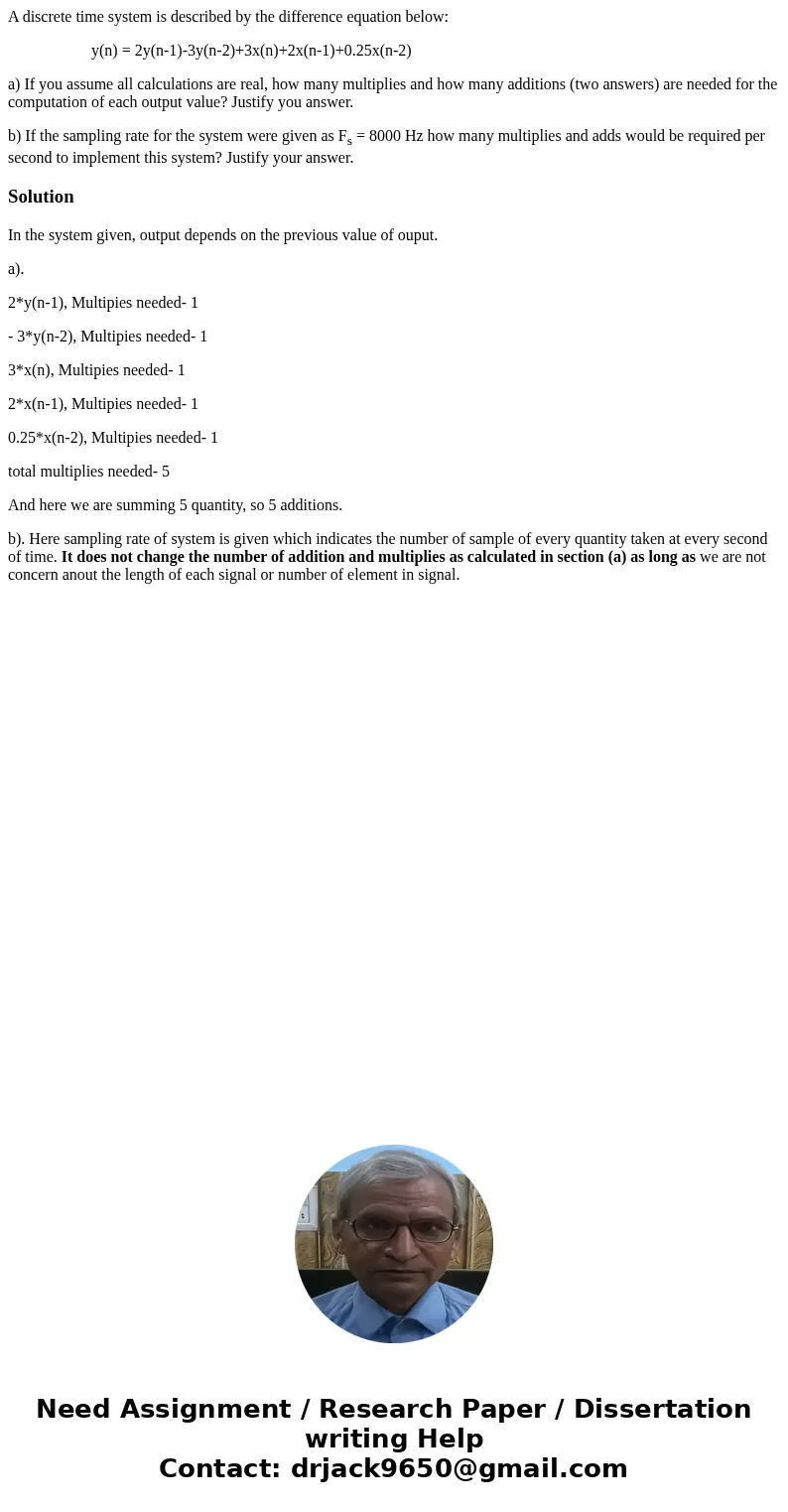A discrete time system is described by the difference equati
A discrete time system is described by the difference equation below:
y(n) = 2y(n-1)-3y(n-2)+3x(n)+2x(n-1)+0.25x(n-2)
a) If you assume all calculations are real, how many multiplies and how many additions (two answers) are needed for the computation of each output value? Justify you answer.
b) If the sampling rate for the system were given as Fs = 8000 Hz how many multiplies and adds would be required per second to implement this system? Justify your answer.
Solution
In the system given, output depends on the previous value of ouput.
a).
2*y(n-1), Multipies needed- 1
- 3*y(n-2), Multipies needed- 1
3*x(n), Multipies needed- 1
2*x(n-1), Multipies needed- 1
0.25*x(n-2), Multipies needed- 1
total multiplies needed- 5
And here we are summing 5 quantity, so 5 additions.
b). Here sampling rate of system is given which indicates the number of sample of every quantity taken at every second of time. It does not change the number of addition and multiplies as calculated in section (a) as long as we are not concern anout the length of each signal or number of element in signal.

 Homework Sourse
Homework Sourse